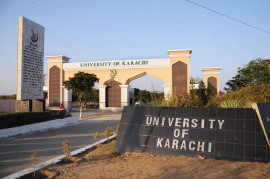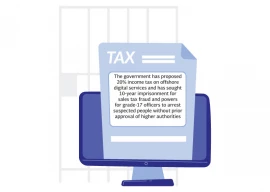1737446446-0/sidra--(61)1737446446-0.png)
For Pakistanis, China is a loyal ally and "iron brother." A time-tested friendship from working together to construct the Karakoram highway under extreme conditions defying nature to the collaborative infrastructure projects connecting Pakistan to the world, worthy of being called an all-weather friendship. While official alliances and economic projects garner much attention, the human element—personal connections, shared learning, and cultural exchange—can anchor this partnership well into the future.
Grassroots bonds nurture and fortify bilateral relations while addressing the misunderstandings and misperceptions that sometimes spark tragic incidents in areas having limited exposure to China, its history, and its culture.
Education has already emerged as a powerful engine of cross-cultural understanding. Over 28,000 Pakistani students were enrolled in Chinese universities as of 2022, learning and building relationships with the people, which can result in organically grown collaborative ventures. Chinese firms are looking to invest in the solar industry in Pakistan, and such firms would feel more comfortable dealing with people who speak their language and are familiar with their ways.
Pakistanis studying in China are not just students but assets; they gain professional skills, deepen interpersonal ties, and learn from our more advanced northern neighbor. Learning can move so much more beyond just universities and scholarships to tangible development that can benefit the communities of both states.
Although Confucius institutes in Islamabad, Lahore, and Karachi provide glimpses of the Chinese language and culture, their reach seldom extends beyond major urban centers. It would also be crucial to establish smaller, regionally tailored centers or offer virtual classes to expand their reach to remote areas. However, success depends on addressing issues like funding, proper training, and adequate infrastructure.
Community-level efforts can further balance knowledge exchange, ensuring that everyday Pakistanis—rather than just city dwellers—have some exposure to Chinese culture. Islamabad should also make similar efforts to build better people-to-people relationships in China. Cultural exhibitions can be organized, and student exchange programs can be set up so that Chinese students can visit and experience what Pakistan has to offer. Such familiarity benefits student groups and local communities, forging friendships and building trust.
The spotlight on Pakistani culture in China remains comparatively dim despite enormous potential for collaboration. Joint film productions and digital platforms could bring Pakistan's rich artistic heritage—its music, cuisine, and literature—to Chinese audiences who otherwise only see fleeting glimpses in the international media. Translating seminal works by writers and poets into Mandarin could invite deeper engagement, shifting perceptions that have lingered from outdated stereotypes.
Tourism, too, represents a largely untapped avenue due to lacking people-to-people ties. Pakistan's landscapes—from the awe-inspiring Hunza Valley to the coastal beauty of Gwadar—draw interest but have yet to attract large-scale tourism from China. Even moderate improvements in visa facilitation, infrastructure, and community-based hospitality would generate income and bring Chinese travelers in direct contact with local hosts in regions often unseen by outsiders.
For instance, homestays and guided treks in Gilgit-Baltistan could capture the imagination of adventure-seekers looking for authentic experiences. The government needs to support and facilitate rather than fund big public projects to help transform this potential into lasting economic benefits for the local communities.
Such efforts to expand person-to-person connections carry significant security and stability implications. Local apprehensions about China have occasionally disrupted infrastructure projects. Cultural events, language workshops, and community engagements can build trust and dispel community suspicion.
Technology can accelerate these bridges in ways once unimaginable. Apps like TikTok and WeChat allow individuals from both countries to share cooking tutorials, language lessons, and snippets of daily life. A Pakistani student in Beijing demonstrating how to make biryani while learning dumpling recipes from Chinese friends creates a personal connection far more potent than official statements or policies.
Virtual festivals, online collaborations, or cross-border media productions would garner cultural familiarity across geographic divides. These can be powerful tools for educators and cultural organizations to promote cross-cultural understanding.
Some serious policy support for more scholarships, funding for community-level cultural programs, and incentives for joint media projects could amplify existing efforts. Easing visa regulations, better transport networks, and subsidizing cultural events could spark interest in regions largely overlooked by international visitors.
Each step builds upon the notion that long-term friendship depends on real human encounters, far beyond the headlines of large-scale infrastructure or defense deals.
Ultimately, the China-Pakistan relationship requires more than just roads, ports, and infrastructure. It needs everyday interactions among people, learning the other's language and reading the poetry of their cultural icons, trying their foods, or traveling to their country.
These interactions and connections can profoundly help move both nations toward a friendship that is not confined to just formal agreements and evolve "iron brotherhood" beyond mere rhetoric into an enduring partnership rooted in empathy, respect, and shared progress.




1737501233-0/mlk-(1)1737501233-0-165x106.webp)

1737446446-0/sidra--(61)1737446446-0-270x192.webp)
1736834402-0/Untitled-design-(59)1736834402-0-270x192.webp)





1737452260-0/Gaddafi-stadium-(2)1737452260-0-270x192.webp)









COMMENTS
Comments are moderated and generally will be posted if they are on-topic and not abusive.
For more information, please see our Comments FAQ